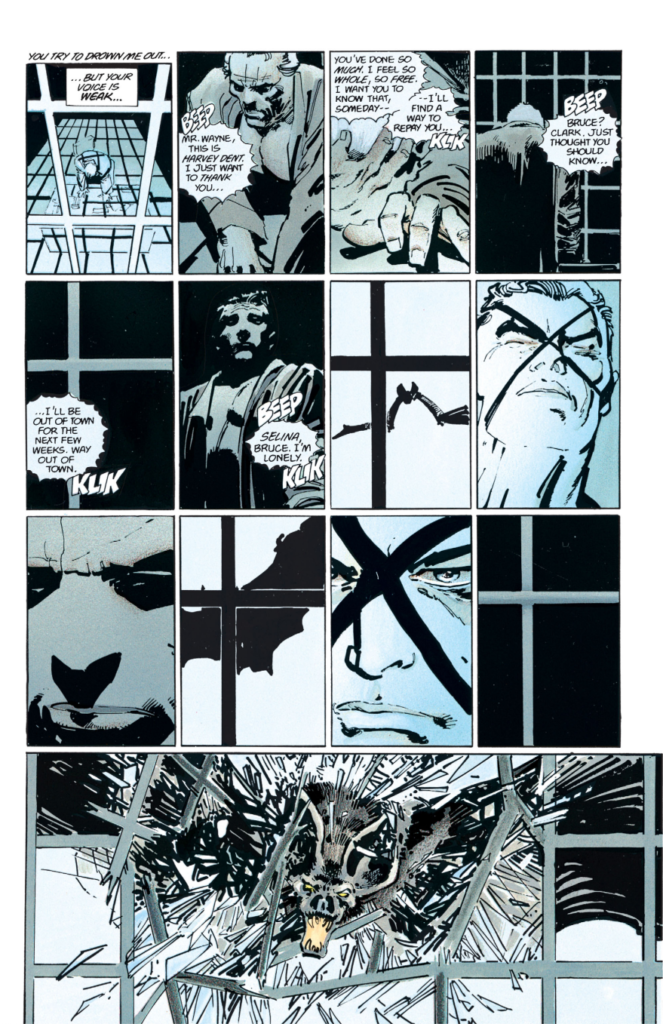Are you an aspiring comic book writer eager to learn the craft? Look no further than the “Write That” strategy, a powerful technique that helps you develop your writing skills by studying and emulating the works of accomplished comic book creators. In this blog post, we’ll walk you through the steps of using the “Write That” strategy to become a proficient comic book writer.
Step 1: Select a comic book scene
Choose a memorable scene from a comic book that resonates with you. It could be a dramatic reveal, a character-defining moment, or a visually striking sequence.

For example, you might select the iconic scene from “The Dark Knight Returns” by Frank Miller, where an aging Bruce Wayne decides to don the Batman cowl once again.
Step 2: Analyze the scene
Break down the scene into its essential elements. Examine the panel composition, pacing, dialogue, and visual storytelling techniques. Take notes on how the writer and artist collaborate to create a powerful narrative.

In Miller’s scene, notice how the close-up panels of Bruce’s eyes and the shadowy figure of the bat (a metaphor for Batman…returning!) build tension and anticipation.
Step 3: Write your version
Now, it’s time to put pen to paper or fingers to keyboard. Write your own version of the scene, aiming to capture the same emotional impact and visual style. Don’t worry about creating an exact replica; instead, focus on understanding and applying the storytelling techniques you observed.
Step 4: Compare and contrast
Once you’ve completed your version, compare it to the original scene. Identify the similarities and differences in your approach. Analyze how your choices in pacing, dialogue, and panel descriptions affect the narrative. This process will help you recognize your strengths and areas for improvement.
Step 5: Revise and refine
Based on your comparison, revise your scene to incorporate the most effective elements from the original while maintaining your unique voice. Pay attention to the feedback you receive from others, and use it to further refine your work.
Step 6: Repeat the process
Select another memorable scene from a different comic book and repeat the “Write That” process. As you study and emulate various styles and techniques, you’ll develop a well-rounded skill set and begin to find your own voice as a comic book writer.
Final Thoughts
The “Write That” strategy is a valuable tool for any aspiring comic book writer. By studying, emulating, and analyzing the works of accomplished creators, you’ll develop a deep understanding of the craft and hone your storytelling skills. Remember, writing is an ongoing journey of learning and growth, so embrace the process and keep practicing. “Write That” is an excellent strategy for learning how to write better comics but it’s not the only one. You could also write annotations. Either way, with dedication and perseverance, you’ll be well on your way to creating compelling and memorable comic book stories of your own.
The Gentleman’s Agreement
If you read this post and got some value from it, do me a solid and subscribe to my newsletter below. It costs nothing and it’s where I do interesting writing, anyway.
Frank Gogol is a San Francisco-based comic book writer. He is the writer of Dead End Kids (2019), GRIEF (2018), No Heroine (2020), Dead End Kids: The Suburban Job (2021), and Unborn (2021) as well as his work on the Power Rangers franchise.
Gogol’s first book, GRIEF, was nominated for the Ringo Award for Best Anthology in 2019. Gogol and his second book, Dead End Kids, were named Best Writer and Best New Series of 2019, respectively, by the Independent Creator Awards.
